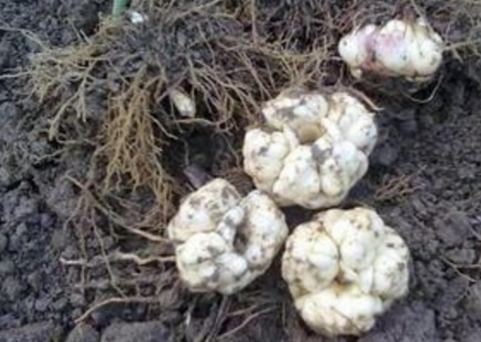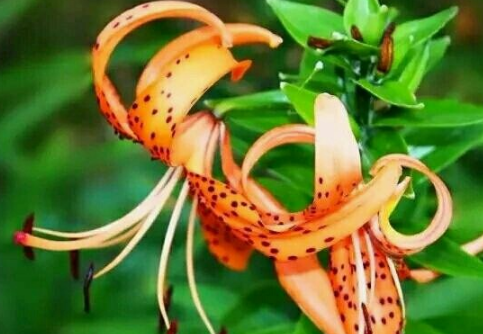Prevention and control of diseases and insect pests of blue chrysanthemum
Because blue chrysanthemum is relatively easy to feed, vitality is also very tenacious, so it rarely gets sick, and there are not many diseases and insect pests, generally common pests are aphids, once there are such pests, it is necessary to solve them immediately. It is OK to spray plants with 80% dichlorvos EC 1000 times or a net 1000 times solution.

Today's content is introduced here, I hope that friends who have read this article can learn some knowledge to better protect the blue chrysanthemum.
How to raise blue chrysanthemum 1. Temperature
The suitable growth temperature of blue chrysanthemum is a little different from that of other plants. The most suitable temperature for the growth of blue chrysanthemum is between 20 and 25 ℃. Too high or too low temperature will directly reduce the germination rate of seeds, so we should control its growth temperature when raising blue chrysanthemum.
2. Watering
When we sow blue-eye chrysanthemum seeds for daily maintenance, we must control the soil moisture, which is very important to the growth of blue-eye chrysanthemum. When we water the blue chrysanthemum, the hydraulic power should not be too large, the hydraulic power with great impact will damage the soil surface of the blue chrysanthemum, which will also affect the root system of the blue chrysanthemum.
3. Lighting
I believe flower friends all know that blue chrysanthemum is a kind of plant that avoids the heat. So how to raise blue-eye chrysanthemums in summer? It is too hot in summer, so we must protect it from shade in summer. If it is in other seasons, you can leave it outside to receive light to prevent the seedlings from overgrowing.
4. Fertilization
I believe that flower friends who have raised blue-eye chrysanthemum know that blue-eye chrysanthemum blossoms for a long time, so they will think that it needs sufficient nutrients to support it. In fact, we only need to apply a thin fertilizer before the flowering stage to allow the blue chrysanthemum to grow healthily during the flowering period, and to apply fertilizer once to resist the severe cold in the too cold winter.
The above is to introduce the problem of how to raise blue chrysanthemum, let's take a look at the pest control of blue chrysanthemum!
Culture methods of Chrysanthemum morifolium
Growth habits of Chrysanthemum morifolium
Blue chrysanthemum likes warm, sunny, fertile soil, but they can also grow tenaciously in barren, salty or dry environments. It should be noted that there are great differences in stress resistance among different varieties of blue-eye chrysanthemum. generally speaking, blue-eye chrysanthemum with strong stress resistance has spreading leaves, creeping plants, purple, pink, white and other colors, and the flower heart is mostly dark blue.
Reproduction mode of blue-eye chrysanthemum
There are two ways of reproduction: sowing propagation and cutting propagation. Generally, seeds are sown in autumn, winter or spring, and cutting propagation is generally in autumn and winter.
Maintenance of blue chrysanthemum
Because the flowering period of the current blue-eye chrysanthemum cultivation is relatively long, only keeping proper watering and fertilization can make the plant blossom continuously, and the withered flowers do not need to be cut off, otherwise it will not be conducive to fruiting.
If you grow blue-eye chrysanthemum in a container, you must keep the soil moist. Once the soil dries up, the blue-eye chrysanthemum will go into dormancy, causing the buds to fall, and it is not easy to blossom again later. If the drought is watered again, do not water too much, the soil is too wet will lead to root rot.
Prevention and control of diseases and insect pests of blue chrysanthemum
Because the cultivation and management of blue chrysanthemum is relatively simple, there are few diseases and insect pests. Aphids are common pests, and plants can be sprayed with 80% dichlorvos EC 800 times or 1000 times at a time.
About the blue chrysanthemum breeding method, the editor first introduced here.
- Prev

Propagation method of Lilium officinalis
The seeds were collected in autumn and stored in the spring of the following year. After a week of sowing, it can germinate. After germination, it should be properly shaded to avoid direct light and burns. Generally, small bulbs grow after autumn, and the bulbs can be dug out and planted in flowerpots. A plant raised in this way may blossom in one to three years.
- Next

Disease prevention and control of lilac
1. Symptoms of penicilliosis: during storage, white spots grow on rotting scales and fluffy green-blue patches grow. Finally, the pathogen invaded the basal disc of the bulb and slowed down the growth of the plant. Prevention and treatment: do not plant bulbs invaded by bacteria
Related
- Fuxing push coffee new agricultural production and marketing class: lack of small-scale processing plants
- Jujube rice field leisure farm deep ploughing Yilan for five years to create a space for organic food and play
- Nongyu Farm-A trial of organic papaya for brave women with advanced technology
- Four points for attention in the prevention and control of diseases and insect pests of edible fungi
- How to add nutrient solution to Edible Fungi
- Is there any good way to control edible fungus mites?
- Open Inoculation Technology of Edible Fungi
- Is there any clever way to use fertilizer for edible fungus in winter?
- What agents are used to kill the pathogens of edible fungi in the mushroom shed?
- Rapid drying of Edible Fungi

